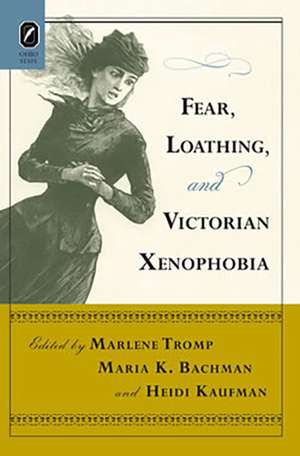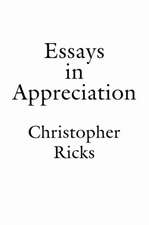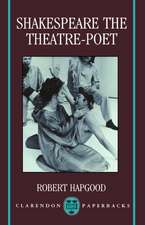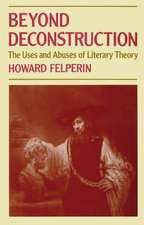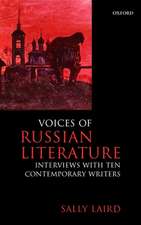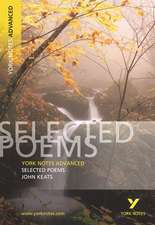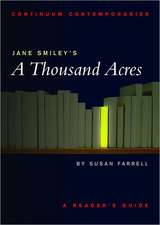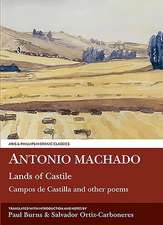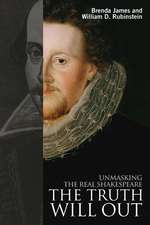Fear, Loathing, and Victorian Xenophobia
Editat de Ph.D. Marlene Tromp, Maria Bachman, Heidi Kaufmanen Limba Engleză Paperback – 27 noi 2016
In this groundbreaking collection, scholars explore Victorian xenophobia as a rhetorical strategy that transforms “foreign” people, bodies, and objects into perceived invaders with the dangerous power to alter the social fabric of the nation and the identity of the English. Essays in the collected edition look across the cultural landscape of the nineteenth century to trace the myriad tensions that gave rise to fear and loathing of immigrants, aliens, and ethnic/racial/religious others. This volume introduces new ways of reading the fear and loathing of all that was foreign in nineteenth-century British culture, and, in doing so, it captures nuances that often fall beyond the scope of current theoretical models. “Xenophobia” not only offers a distinctive theoretical lens through which to read the nineteenth century; it also advances and enriches our understanding of other critical approaches to the study of difference. Bringing together scholarship from art history, history, literary studies, cultural studies, women’s studies, Jewish studies, and postcolonial studies, Fear, Loathing, and Victorian Xenophobia seeks to open a rich and provocative dialogue on the global dimensions of xenophobia during the nineteenth century.
Preț: 361.86 lei
Nou
Puncte Express: 543
Preț estimativ în valută:
69.25€ • 75.20$ • 58.17£
69.25€ • 75.20$ • 58.17£
Carte tipărită la comandă
Livrare economică 18-24 aprilie
Preluare comenzi: 021 569.72.76
Specificații
ISBN-13: 9780814254288
ISBN-10: 0814254284
Pagini: 392
Dimensiuni: 152 x 229 x 28 mm
Greutate: 0.57 kg
Ediția:1
Editura: Ohio State University Press
Colecția Ohio State University Press
ISBN-10: 0814254284
Pagini: 392
Dimensiuni: 152 x 229 x 28 mm
Greutate: 0.57 kg
Ediția:1
Editura: Ohio State University Press
Colecția Ohio State University Press
Recenzii
“Fear, Loathing, and Victorian Xenophobia makes a significant contribution to the field of nineteenth-century studies by extending the critical lens beyond the imperialist mission to a more widespread and psychological condition.” —Natalie McKnight, professor and chair of humanities, Boston University
“Fear, Loathing, and Victorian Xenophobia makes a significant contribution to nineteenth-century literary and cultural studies by highlighting how various and overlapping modes of difference—class, race, cultural, ethnic, national—elicited a host of xenophobic responses that marked Britain’s long nineteenth century. In so doing, the volume adds a much-needed thickness to discussions of xenophobia.” —Sukanya Banerjee, associate professor of English, University of Wisconsin-Milwaukee
Notă biografică
Marlene Tromp is professor of English and women and gender studies, and Dean of the New College of Interdisciplinary Arts and Sciences at Arizona State University. Maria K. Bachman is professor and chair in the Department of English at Coastal Carolina University. Heidi Kaufman is assistant professor of English at the University of Oregon.
Cuprins
Introduction · Coming to Terms with Xenophobia: Fear and Loathing in Nineteenth-Century England
Part I · Epidemic Fear
1 The Pollution of the East: Economic Contamination and Xenophobia in Little Dorrit and The Mystery of Edwin Drood
2 Victorian Quarantines: Holding the Borders against “Fevered” Italian Masculinity in Dante Gabriel Rossetti’s “St. Agnes of Intercession”
3 Contracting Xenophobia: Etiology, Inoculation, and the Limits of British Imperialism
4 Charles Dickens, Wilkie Collins, and the Perils of Imagined Others
5 Maudlin Profanity and Midnight Debauchery: Infanticide and the Angelito
Part II · Xenophobic Panic
6 Food, Famine, and the Abjection of Irish Identity in Early Victorian Representation
7 “Wot is to Be”: The Visual Construction of Empire at the Crystal Palace Exhibition, London, 1851
8 Terrible Turks: Victorian Xenophobia and the Ottoman Empire Patrick Brantlinger 208
9 Ethnicity as Marker in Henry Mayhew’s London Labour and the London Poor
Part III · The Foreign Invasion
10 Jewish Space and the English Foreigner in George Eliot’s Daniel Deronda
11 Exile London: Anarchism, Immigration, and Xenophobia in Late-Victorian Literature
12 Xenophobia on the Streets of London: Punch’s Campaign against Italian Organ-Grinders, 1854–1864
13 “You know not of what you speak”: Language, Identity, and Xenophobia in Richard Marsh’s The Beetle: A Mystery (1897)
14 Dracula’s Blood of Many Brave Races
Afterword · Fear and Loathing: Victorian Xenophobia
Part I · Epidemic Fear
1 The Pollution of the East: Economic Contamination and Xenophobia in Little Dorrit and The Mystery of Edwin Drood
2 Victorian Quarantines: Holding the Borders against “Fevered” Italian Masculinity in Dante Gabriel Rossetti’s “St. Agnes of Intercession”
3 Contracting Xenophobia: Etiology, Inoculation, and the Limits of British Imperialism
4 Charles Dickens, Wilkie Collins, and the Perils of Imagined Others
5 Maudlin Profanity and Midnight Debauchery: Infanticide and the Angelito
Part II · Xenophobic Panic
6 Food, Famine, and the Abjection of Irish Identity in Early Victorian Representation
7 “Wot is to Be”: The Visual Construction of Empire at the Crystal Palace Exhibition, London, 1851
8 Terrible Turks: Victorian Xenophobia and the Ottoman Empire Patrick Brantlinger 208
9 Ethnicity as Marker in Henry Mayhew’s London Labour and the London Poor
Part III · The Foreign Invasion
10 Jewish Space and the English Foreigner in George Eliot’s Daniel Deronda
11 Exile London: Anarchism, Immigration, and Xenophobia in Late-Victorian Literature
12 Xenophobia on the Streets of London: Punch’s Campaign against Italian Organ-Grinders, 1854–1864
13 “You know not of what you speak”: Language, Identity, and Xenophobia in Richard Marsh’s The Beetle: A Mystery (1897)
14 Dracula’s Blood of Many Brave Races
Afterword · Fear and Loathing: Victorian Xenophobia
Descriere
Brings together scholarship from art history, history, literary studies, cultural studies, women’s studies, Jewish studies, and postcolonial studies to explore Victorian xenophobia.
